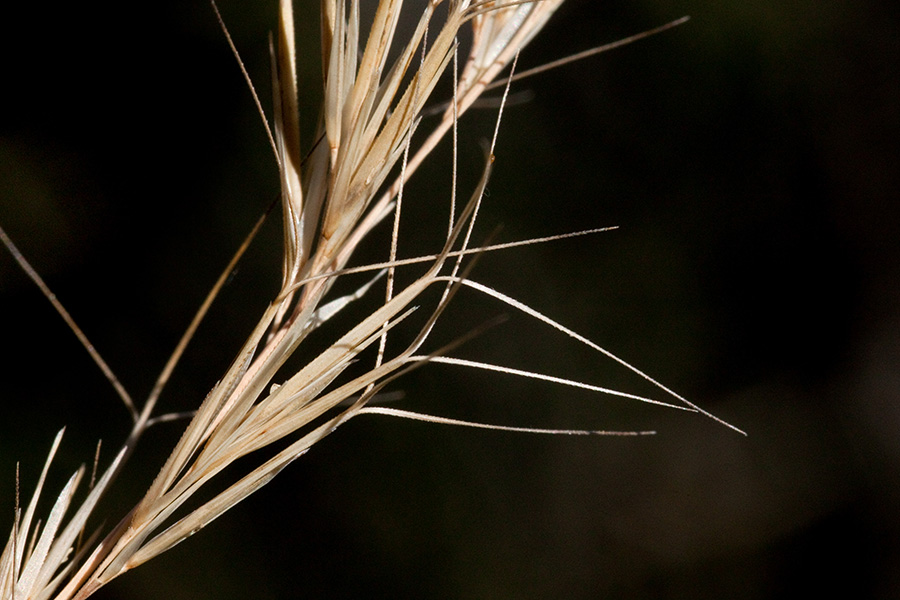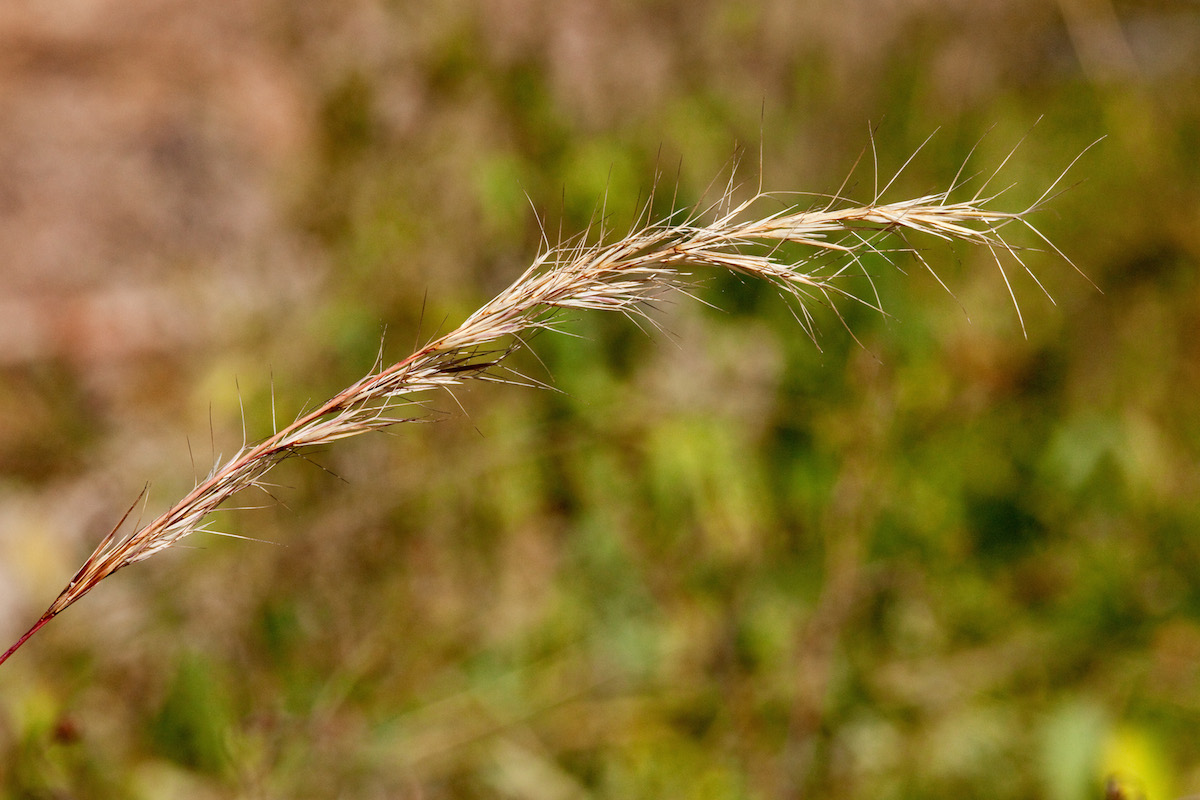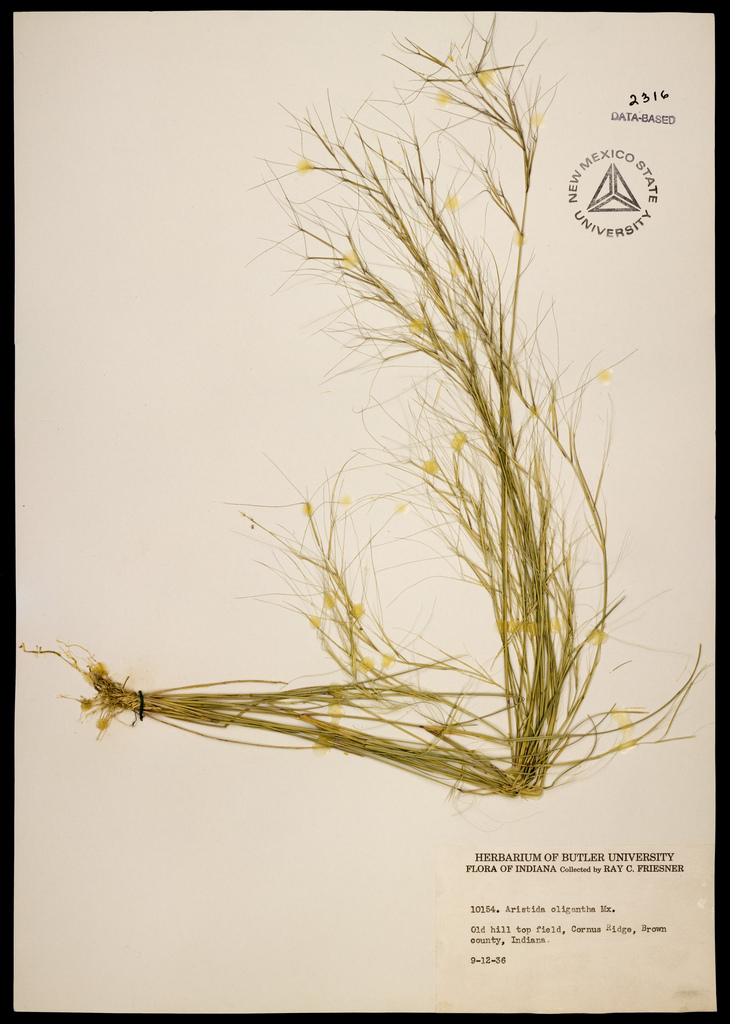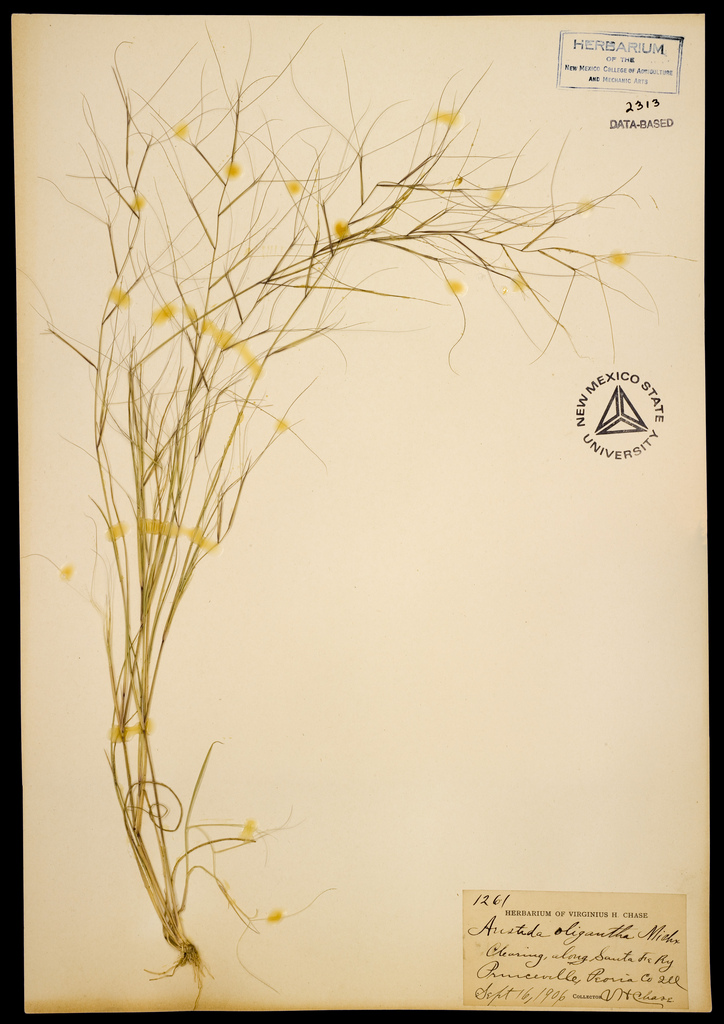Selected Plants of Navajo Rangelands
Three-awns, annual
Azéé’iilwo’iiyázhí

Three-awns are grasses that occur in both annual and perennial forms. On Navajo rangelands, the annual three-awn species are six weeks three-awn (Aristida adscensionis) and oldfield three-awn (Aristida oligantha). Three-awns are native to the United States.
They are not considered a valuable forage species, though they do provide some habitat for birds and other small animals. The awns can tend to catch in the wool or irritate the skin of livestock.
These bunchgrasses are many-branched toward the base of the clump, and they grow to a height of about three feet. The leaves roll inward. The florets and awns of the inflorescences spread outward, creating a brushy appearance. There are three awns on each floret.



Copyright 2018 New Mexico State University. Individual photographers retain all rights to their images. Partially funded by the Western Sustainable Agriculture Research and Education Program (westernsare.org; 435.797.2257), project EW15-023. Programs and projects supported by Western SARE are equally open to all people. NMSU is an equal opportunity/affirmative action educator and employer..
NMSU does not discriminate on the basis of age, ancestry, color, disability, gender identity, genetic information, national origin, race, religion, retaliation, serious medical condition, sex (including pregnancy), sexual orientation, spousal affiliation or protected veteran status in its programs and activities as required by equal opportunity/affirmative action regulations and laws and university policy and rules. For more information please read the NMSU Notice of Non-discrimination (opens in new window).

